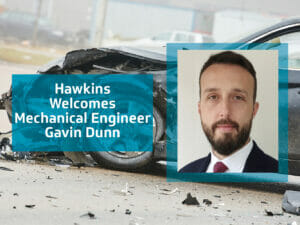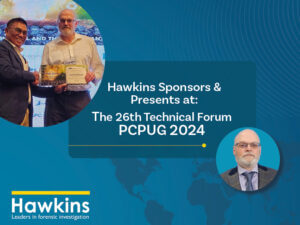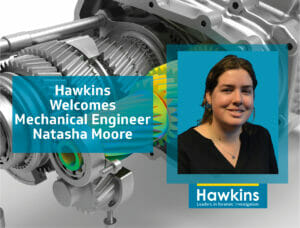For the past few years, I have convened a working group within CIGRE, or Conseil International des Grands Réseaux Electriques, translated as, “Council on Large Electric Systems.” I aim to provide a guide to stakeholders, such as power plant operators and other interested parties, as to the requirements to high-speed test (electrically and mechanically) rotors, following any rotor maintenance carried out. In 2022 a brochure was published[1] by the working group with the input of generator specialists around the world from operations, Original Equipment Manufacturers (OEMs), third-party service providers, and consultants.
The subject of high-speed balancing generator rotors can be contentious, and the practice varies across the world. In Europe, with relatively easy access to high-speed test facilities, the default position is generally to carry out the testing. However, in Southeast Asia, Africa and South America, where there are fewer (if any) facilities, a risk-based approach is taken more often; this approach does not include high-speed testing. Therefore, an obvious imbalance exists between the economic impact of sending a rotor away for potential months, versus returning the rotor to service quicker without such testing.
Thus, the CIGRE brochure was designed to provide not only engineers, but also other stakeholders such as OEMs, service providers, consultants, insurers, and loss adjusters, with guidance to assist them with their decision making. The guide also offers support and methods to mitigate the risk if high-speed testing is not carried out.
How Are Electrical Generators Tested?
The electrical generators used in large power plants are formed of two major components:
- The Stator—the static coil in which the electricity is generated, and is connected to the grid
- The Rotor—the rotating electromagnet, which is spun by the turbine and ‘excites’ the stator
On large generators, a rotor can be cases up to 200 tonnes and spin at the grid frequency of 3,000 or 3,600 revolutions a minute.
Most large turbo generators are constructed with a large, forged steel rotor body. A copper winding, constructed of many turns of copper strips, is wound into slots machined along the length of the rotor’s body. The copper is held onto the forged rotor body by wedges. At the end of the rotor, in a region called the endwinding, the copper is held in place using steel rings known as endwinding retaining rings.
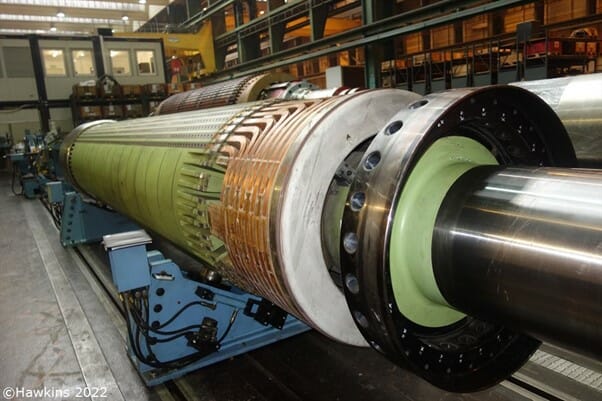
With such large components spinning at high speeds, it is important that all parts of a rotor are carefully, mechanically balanced to prevent excessive vibration during operation. All components must be mechanically sound, so as not to fail due to the high centrifugal forces.
The balancing is carried out in specialist balance facilities (usually known as balance pits, spin pits or balance bunkers). Such facilities are few and far between, generally at limited manufacturing locations around the world. These sites have the facility to:
- Spin the rotors up to a high speed (usually operating speed +20%);
- Carry out electrical testing at speed;
- Contain any parts of the rotor, in case of catastrophic failure during a test.
Balance and High-Speed Testing Locations
In recent years, the number of these balance facilities around the world has reduced, as the various manufacturers have consolidated and sought to cut costs.
As part of putting together this technical brochure, I produced the below map of both open and recently closed high-speed testing facilities. It should be noted that these facilities will have varying capabilities. The largest generator rotors will have very few locations which can accept them.
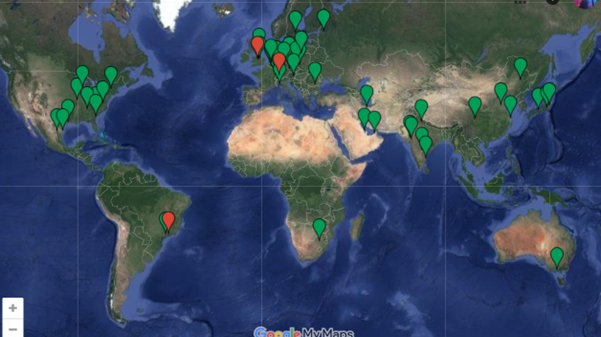
Whenever any maintenance is carried out on rotors, power plant engineers are often faced with the difficult question of whether the rotor should be rebalanced or retested at high speeds. Though retesting is generally understood to be a better, lower-risk option, there can be substantial operational and financial pressures against doing so. Depending on the rotor’s geographical location, the decision to send a rotor for high-speed testing and balancing may require months of transport to and from a facility—on top of any time taken for the testing to occur. While a generator is out of service, business interruption can in be the region of $250,000 USD a day, or even higher.
In the manufacture of high-speed turbine generators, the rotors undergo a number of tests to prove their integrity, both mechanically and electrically. The rotor is monitored from standstill to running speed and overspeed as well as tested from ‘cold’ to operating temperature, to ensure that it does not produce high vibrations (which limit its operation in service). These tests are carried out to prove that:
- All the components of the rotor have the mechanical integrity to operate within the full speed range expected in normal operation;
- The vibration levels of the rotor are acceptable through its run-up, at both rated speed and overspeed;
- Vibration levels remain within acceptable levels;
- The rotor is thermally stable (i.e. the vibration levels stay within acceptable levels as the rotor heats up), and the thermal stability is repeatable;
- The integrity of the insulation is maintained throughout the speed range (i.e. there are neither any rotor ground faults, where a short forms between the winding and the earthed rotor body, nor any interturn faults, where a short forms between two or more turns of the winding).
These tests are carried out at the factory to prove the integrity of the equipment, ensure it is properly balanced and limit the risk of failure at the plant. If the vibration is excessive, balance weights can be fitted, and the rotor retested. This work is often referred to simply as “balancing”.
Repair work or maintenance on rotors outside of the original manufacture may not be carried out at a workshop with a high-speed facility, and in some cases, such work may even be carried out on-site. If high-speed testing is required, it may add months to an outage program. It is quite usual for engineers to face pressure to reduce outage times and costs and to consider whether high speed testing of the rotors is necessary.
Potential Issues and Repairs
Work on a generator rotor can take many forms, from removal of the retaining rings to a full rewind of the rotor winding with new copper, as well as potential mechanical modifications to the rotor forging.
In rotors, the voltage is generally low, in the range of a few hundred volts, with maybe just a few volts between individual turns. However, the high current will create a large amount of heat (over a megawatt of resistive heating in larger generators).
The major challenge for rotor insulation systems is the mechanical complications caused by several constraints:
- When operating at speed, the rotor needs to be finely balanced to prevent high vibrations;
- As the rotor heats up, internal components can either move through thermal expansion or become stuck if their slip planes do not allow for free movement;
- If there are any electrical shorts between the turns of the winding, the resistive heat created will not be distributed throughout the rotor equally;
- If the rotor heats unequally, the thermal expansion of the steel will cause the rotor forging to bend slightly (into a banana shape) and create higher than normal vibration.
It is quite common for repairs to be made on a rotor, and for it to pass all the electrical tests without problems in the factory at standstill, but once the rotor is up to speed, faults can appear. This can be for a variety of issues, but usually where the insulation is punctured under centrifugal forces.
Two types of electrical fault can occur: an interturn fault, and an earth fault. Interturn faults are much more common and may have little effect on the operation of the machine, although some faults will lead to high vibrations. If the vibration levels are high enough, they may limit the operation of the generator and may require the rotor to be rewound. In many cases, interturn faults can either be managed, or sometimes balanced out in situ, at the power plant.
However, it is not recommended to operate the generator with a rotor earth fault. One earth fault is not too problematic, as a single earth fault means that there is no circuit and current will not flow. However, should a second earth fault occur, a large detrimental current can flow through the rotor body or retaining rings and cause substantial, potentially irreparable damage.

Conclusions
The CIGRE brochure concluded that the lowest risk option will usually be to have the rotor tested for electrical integrity and mechanically balanced at a high-speed facility.
High-speed and overspeed testing have several benefits including: checking the mechanical integrity of the equipment to operate at speed; ensuring that the rotor is balanced and remains stable throughout the operational envelope of the generator; and checking the electrical integrity at speed.
A compelling financial argument to avoid such tests can still be made due to: the relatively difficult access to a high-speed facility; the potential transport issues (distance, handling, and customs implications); the cost of the testing; and the time taken for the work.
However, if the decision is made not to carry out a high-speed balance, along with electrical and overspeed testing, there are several potential problems that may occur, such as electrical faults or high vibration, which can only be detected when operating at speed. These can be mitigated through the following:
- Using competent contractors
- Maintaining the appropriate working environment;
- Cleaning to excellent standard / excluding foreign material during work;
- Regular testing where possible;
- Robust QA and QC throughout;
- Consideration of the potential to attach weights for balancing at the site after installation
About the Author
Ben Adams is a Senior Associate and electrical engineer in our London office. Prior to joining Hawkins, Ben worked for several power companies providing technical support on ‘heavy’ electrical equipment, including failure investigation of generators, transformers, motors and switchgear across the world.
[1] https://e-cigre.org/publication/878-guidance-on-high-speed-testing-of-turbo-generator-rotors

